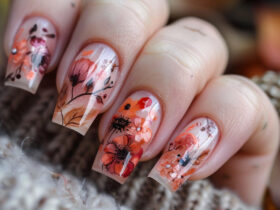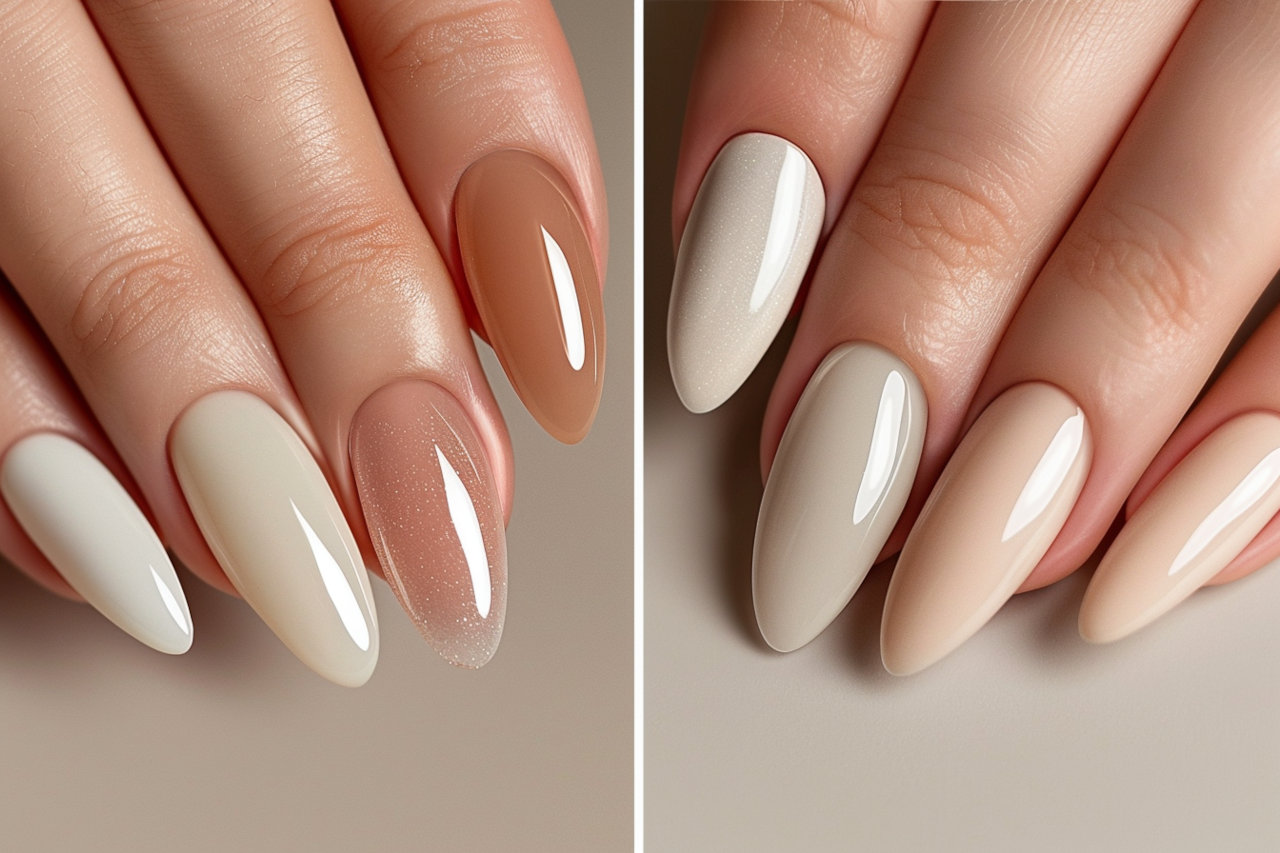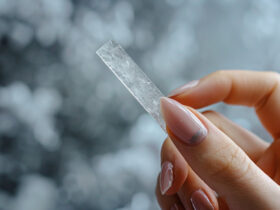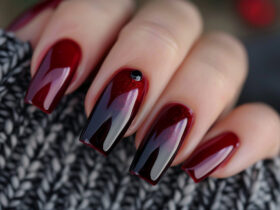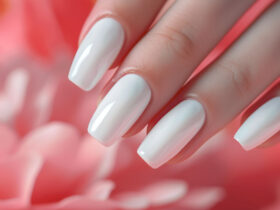When it comes to achieving the perfect manicure, the choice between acrylic and gel nails is one that many beauty enthusiasts face. Both options offer stunning, long-lasting results, but they differ in terms of application, durability, and overall finish. Whether you’re looking to enhance your natural nails or simply experiment with a new look, understanding the differences between acrylic vs. gel nails can help you make an informed decision. This guide will delve into the pros and cons of each, providing you with all the information you need to choose the best option for your style and lifestyle.
What are Acrylic Nails?
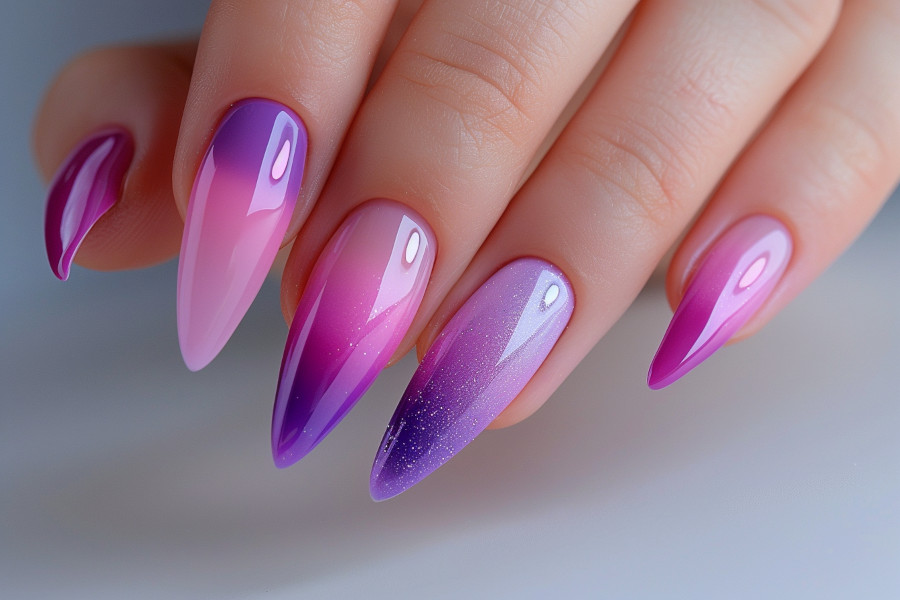
Composition and Application of Acrylic Nails
Acrylic nails are a popular form of nail enhancement made from a combination of liquid monomer and powder polymer. When mixed, these components create a hard protective layer that can be molded and shaped over your natural nails or nail extensions. Acrylic nails are known for their strength and durability, making them a go-to choice for those looking to add length and thickness to their nails.
The application process begins with prepping the natural nails, which includes filing, shaping, and removing any oils from the nail bed. Next, the nail technician applies a primer to help the acrylic adhere better. The acrylic mixture is then carefully applied and shaped using a brush. After the desired shape is achieved, the nails are allowed to air dry and harden. Once set, the nails are buffed and polished to create a smooth, glossy finish.
What are Gel Nails?
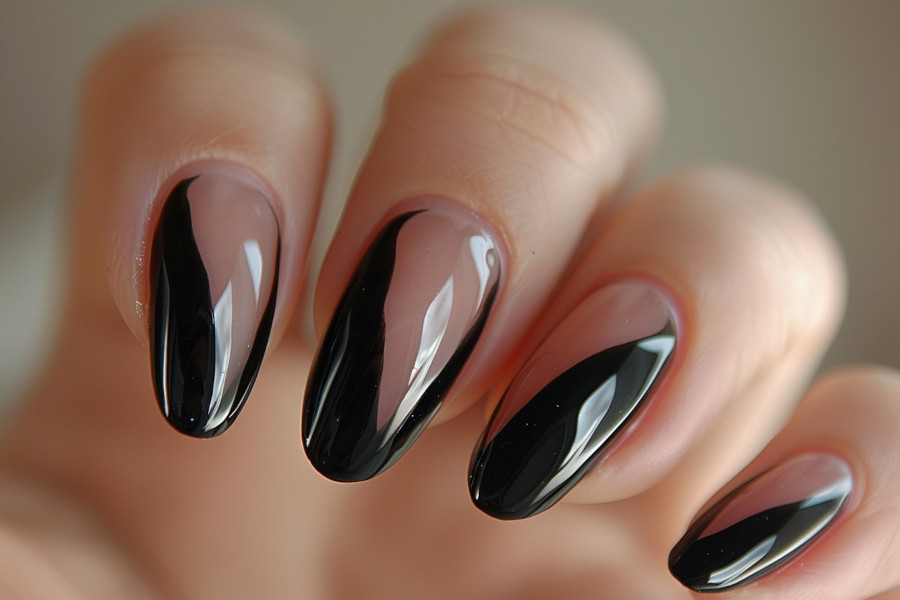
Composition and Application of Gel Nails
Gel nails are another popular option for achieving a long-lasting, polished look. Unlike acrylics, gel nails are made from a gel-like substance that is applied directly to the natural nails or nail extensions. The gel is cured under a UV or LED light to harden it and set the shape.
The process of applying gel nails typically starts with cleaning and preparing the natural nails, similar to acrylic application. A base coat of gel is applied first, followed by layers of colored gel polish. After each layer, the nails are cured under a UV or LED lamp, which solidifies the gel. This curing process ensures that the nails are strong and resistant to chipping. Finally, a top coat is applied and cured to seal the nails and add extra shine.
Key Differences Between Acrylic and Gel Nails
Durability Comparison
One of the primary differences between acrylic and gel nails lies in their durability. Acrylic nails are known for being extremely tough and long-lasting. They can withstand significant wear and tear, making them a preferred choice for individuals who work with their hands or engage in activities that might cause damage to their nails.
Gel nails, while also durable, tend to be more flexible than acrylics. This flexibility can make them less prone to cracking under pressure but might not be as long-lasting as acrylics in more demanding conditions. However, gel nails generally provide a more natural look and feel, which can be a deciding factor for many.
Application Process
Step-by-Step Guide for Acrylic Nails
- Preparation: The natural nails are cleaned, filed, and shaped.
- Primer Application: A primer is applied to the nails to enhance the adhesion of the acrylic.
- Acrylic Mixture: The liquid monomer and powder polymer are mixed to create the acrylic.
- Application: The acrylic mixture is applied to the nails, shaped, and molded as desired.
- Drying: The nails are allowed to air dry and harden.
- Buffing and Polishing: The nails are buffed and polished for a smooth, shiny finish.
Step-by-Step Guide for Gel Nails
- Preparation: Similar to acrylics, the natural nails are cleaned, filed, and shaped.
- Base Coat Application: A base coat of gel is applied and cured under a UV/LED light.
- Gel Polish Application: Layers of colored gel polish are applied, with each layer being cured.
- Top Coat Application: A top coat is applied to seal the nails, followed by curing.
- Final Touches: The nails are wiped with a cleansing solution to remove any sticky residue.
Durability and Longevity
How Long Do Acrylic Nails Last?
Acrylic nails typically last between two to three weeks before requiring a fill-in. However, with proper care, they can last even longer. The longevity of acrylics depends on factors such as nail growth rate, daily activities, and how well they are maintained. Regular maintenance, including fills and avoiding harsh chemicals, can extend their lifespan.
How Long Do Gel Nails Last?
Gel nails generally last around two to three weeks as well, though they are more prone to lifting or peeling if not properly maintained. The longevity of gel nails can be influenced by the quality of the application, the curing process, and aftercare practices. With proper care, gel nails can also last longer than the average time frame.
Cost Comparison
Average Cost of Acrylic Nails
The cost of acrylic nails varies depending on location, the expertise of the nail technician, and the complexity of the design. On average, a full set of acrylic nails can cost between $30 to $60. More intricate designs or higher-end salons may charge upwards of $100 or more. Regular fills typically cost between $20 to $40.
Average Cost of Gel Nails
Gel nails tend to be slightly more expensive than acrylics due to the materials and curing process involved. A full set of gel nails usually ranges from $35 to $70, with prices going higher for more elaborate designs or premium salons. Fills for gel nails generally cost between $25 to $45.
Maintenance and Upkeep
How to Care for Acrylic Nails
Proper care is essential to maintaining the appearance and durability of acrylic nails. This includes regular moisturizing of the cuticles, avoiding excessive water exposure, and using gloves when handling harsh chemicals. Additionally, it’s important to schedule regular fill-ins every two to three weeks to keep the nails looking fresh and to prevent lifting or breakage.
How to Care for Gel Nails
Caring for gel nails involves similar steps to those for acrylics. Keeping the nails and cuticles moisturized, avoiding picking or peeling the gel, and wearing gloves during chores can help maintain their appearance. Since gel nails are more flexible, it’s also crucial to avoid any activities that could cause them to bend or lift prematurely. Regular touch-ups every two to three weeks are recommended.
Health and Safety Considerations
Potential Health Risks of Acrylic Nails
While acrylic nails are generally safe when applied by a professional, there are some health risks to consider. The chemicals used in the application process, such as the monomer, can cause allergic reactions in some individuals. Additionally, improper application or removal can lead to nail damage, thinning, or infections. It’s crucial to ensure that your nail technician is experienced and follows proper hygiene practices to minimize these risks.
Potential Health Risks of Gel Nails
Gel nails also carry certain risks, particularly related to the UV or LED curing process. Prolonged exposure to UV light has been associated with skin aging and, in some cases, an increased risk of skin cancer. Some gel formulations contain ingredients that can cause allergic
reactions or irritation. As with acrylics, it’s essential to have gel nails applied and removed by a trained professional to avoid damage to the natural nails.
Nail Removal Process
Safe Removal of Acrylic Nails
Removing acrylic nails requires patience and care to avoid damaging the natural nails. The safest method involves soaking the nails in acetone to dissolve the acrylic. This can be done by soaking cotton balls in acetone, placing them on the nails, and wrapping them in aluminum foil. After about 20-30 minutes, the acrylic should begin to soften and can be gently pushed off with a cuticle stick. It’s important to avoid forcibly prying off the acrylic to prevent nail damage.
Safe Removal of Gel Nails
Gel nails should also be removed using acetone, but the process differs slightly from acrylics. The nails are first buffed to remove the shiny top coat, which allows the acetone to penetrate the gel layers more effectively. Similar to acrylics, soaked cotton balls are placed on the nails and wrapped in foil. After 15-20 minutes, the gel should begin to lift and can be gently scraped off. Any remaining residue can be buffed away, followed by moisturizing the nails and cuticles.
Natural Nail Impact
Effects of Acrylic on Natural Nails
Acrylic nails, if not applied or removed properly, can have detrimental effects on natural nails. The chemicals used, as well as the process of filing down the natural nails before application, can lead to thinning, weakening, and brittleness. Additionally, prolonged wear of acrylics without allowing the natural nails to “breathe” can result in fungal infections or other nail disorders.
Effects of Gel on Natural Nails
Gel nails, while generally less damaging than acrylics, can still affect the health of natural nails. The removal process, particularly if done improperly, can cause the nails to become thin and weak. Overuse of gel nails without breaks can also lead to nail dehydration and peeling. It’s recommended to allow your natural nails some time to recover between gel applications.
Versatility in Design
Design Possibilities with Acrylic Nails
Acrylic nails are highly versatile when it comes to design possibilities. They can be molded into various shapes and lengths, and the surface is perfect for intricate nail art. Whether you’re looking for a classic French manicure, bold colors, or elaborate designs with rhinestones and other embellishments, acrylic nails can accommodate almost any aesthetic.
Design Possibilities with Gel Nails
Gel nails are also quite versatile and are particularly favored for their natural, glossy finish. Gel polish comes in a wide range of colors and can be layered for a more opaque look. While gel nails might not be as thick or long as acrylics, they are excellent for creating sleek, modern designs. Additionally, the flexibility of gel allows for more subtle and natural-looking nail art.
Time Investment
Time Required for Acrylic Nail Application
Applying a full set of acrylic nails can take anywhere from 45 minutes to an hour, depending on the complexity of the design and the skill of the nail technician. This time investment is similar for fill-ins, which also require a detailed application process. The drying time is relatively short, as acrylic nails air dry without the need for additional curing.
Time Required for Gel Nail Application
Gel nail application typically takes a bit less time than acrylics, with sessions lasting around 30 to 45 minutes. This includes the time spent curing each layer of gel polish under a UV or LED lamp. While the actual application process is faster, the curing steps add to the overall time, making the total time investment for both types of nails fairly comparable.
Which is Better for You?
Acrylic vs. Gel for Different Lifestyles
Choosing between acrylic and gel nails ultimately depends on your lifestyle and personal preferences. If you have a hands-on job or engage in activities that might be tough on your nails, acrylics might be the better option due to their durability. However, if you prefer a more natural look and are willing to invest a bit more time in maintenance, gel nails could be the right choice for you. Consider your daily routine, aesthetic preferences, and how much time you’re willing to spend on nail care when making your decision.
Expert Opinions
Nail Technicians’ Perspectives
Many nail technicians have their own preferences when it comes to acrylic vs. gel nails. Some favor acrylics for their strength and versatility, especially for clients who want long, durable nails. Others prefer gels for their flexibility and natural finish. Ultimately, the choice often comes down to the client’s needs and the specific look they want to achieve. Most professionals agree that both types of nails require proper care and maintenance to ensure they look their best and last as long as possible.
Myths and Misconceptions
Common Myths About Acrylic Nails
There are several myths surrounding acrylic nails, such as the belief that they are harmful to natural nails or that they don’t look as natural as gel nails. While improper application or removal can damage nails, acrylics themselves are not inherently harmful when applied correctly. Another misconception is that acrylics are always thick and unnatural-looking, but skilled technicians can create acrylic nails that are both thin and natural in appearance.
Common Myths About Gel Nails
Gel nails are often thought to be less durable than acrylics or that they can’t be used to create long nails. While gel nails might be slightly less tough than acrylics, they can still provide excellent durability with proper care. Additionally, gel extensions can be used to achieve longer nails, debunking the myth that gel is only for short nails. Another misconception is that UV light used in curing is dangerous; while UV exposure should be minimized, the risks can be managed with proper precautions.
Environmental Impact
Sustainability of Acrylic Nails
Acrylic nails, unfortunately, have a significant environmental impact due to the chemicals involved in their production and disposal. The liquid monomer and polymer powder used in acrylics are not biodegradable, contributing to plastic waste. Additionally, the acetone used in the removal process can be harmful if not disposed of properly. For those concerned with sustainability, minimizing the frequency of acrylic nail applications or seeking eco-friendly alternatives might be worthwhile.
Sustainability of Gel Nails
Gel nails also have an environmental impact, particularly concerning the plastic waste generated from gel polish bottles and the UV curing process. While gel nails might produce less waste than acrylics, the non-biodegradable nature of the products used still poses environmental challenges. Some brands are beginning to offer more sustainable gel options, including non-toxic formulations and recyclable packaging, which could help mitigate the environmental footprint.
Conclusion
When deciding between acrylic vs. gel nails, it’s essential to weigh the pros and cons of each option in the context of your personal preferences and lifestyle. Acrylic nails are known for their durability and versatility, making them ideal for those who need a robust nail enhancement. On the other hand, gel nails offer a more natural look with flexibility, perfect for individuals who prioritize aesthetics and comfort. Whichever you choose, proper care and maintenance will ensure your nails look stunning and last as long as possible.
FAQs
What lasts longer, acrylic or gel nails?
Acrylic nails tend to last longer than gel nails, primarily due to their rigidity and strength. However, with proper care, gel nails can also have a long-lasting finish.
Which is more damaging to natural nails, acrylic or gel?
Both acrylic and gel nails can cause damage to natural nails if not applied or removed properly. However, acrylics are generally more abrasive, leading to a higher risk of nail damage.
Can you switch from acrylic to gel nails?
Yes, you can switch from acrylic to gel nails, but it’s important to remove the acrylics properly to avoid damaging your natural nails before applying gel nails.
Are gel nails more expensive than acrylic nails?
Gel nails are typically slightly more expensive than acrylics due to the materials and UV/LED curing process involved.
Do gel nails look more natural than acrylic nails?
Gel nails generally offer a more natural and glossy finish compared to acrylics, which can be thicker and more rigid.
Can you do nail art on both acrylic and gel nails?
Yes, both acrylic and gel nails are suitable for nail art, although the techniques and tools may differ slightly.




